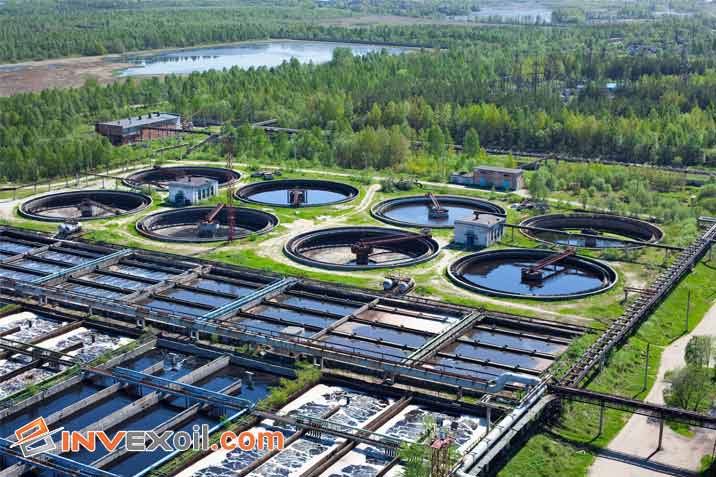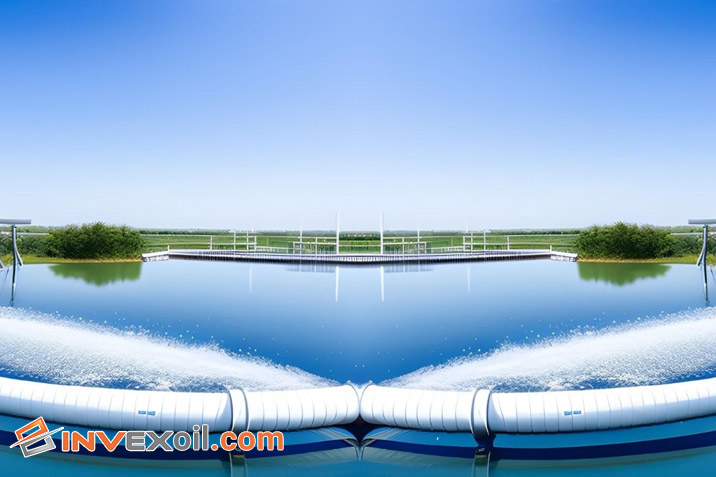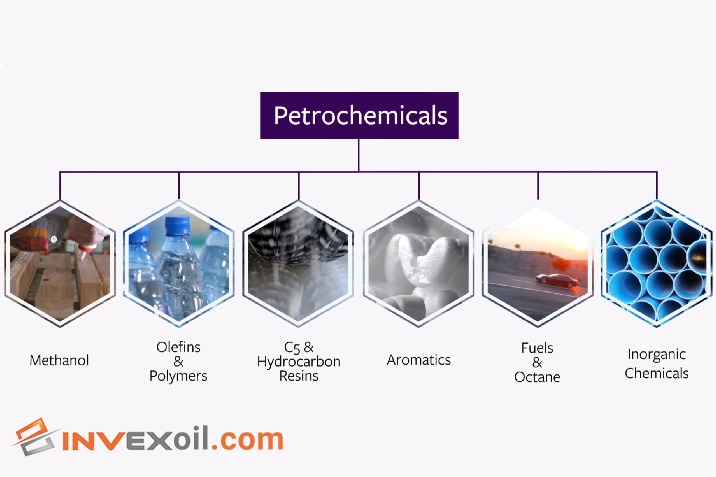In the quest for safe drinking water, the role of fluoride and chlorine as water additives is crucial. But what exactly do these compounds bring to our water? We want to look into the history of chlorine and fluoride in drinking water and introduce mineral adsorbents and catalysts. These additives are playing a special role in the quality of our drinking water. But as we analyze their chemical properties, health benefits, and potential risks, we’ll also explore different methods used for their addition and consider the environmental impacts.
Table of Contents
Evolution of Water Treatment
First of all, we want to understand the long-term Water treatment history. In the early days, our ancestors relied on primitive methods like boiling and filtration, cause to make their water safer for only drinking. It was a matter of life and death because of waterborne diseases were so popular. But everything has changed, and we are so far from those old techniques.
Nowadays, we have many options and advanced methods at our disposal, such as chemical treatments, that is the addition of Fluoride chlorine and other necessary elements. These elements are so important to make sure that our water is safe for any kind of usage like drinking or taking a shower.
This is a table of Fluoride Concentration Standards in Drinking Water that we can check info faster:
| Regulatory Body | Fluoride Concentration Standard (mg/L) |
| World Health Organization | 1.5 |
| U.S. EPA | 4.0 |
| European Union | 1.5 |
| WHO (provisional) | 0.5 |
Chemical Properties of Fluoride and Chlorine
chlorine and fluoride in drinking water are important. Fluoride found a lot in nature, is put in water to help keep our teeth strong and prevent cavities. But, we must be careful about how much we use to avoid tooth or bone problems. Chlorine is great at killing germs in water and stopping diseases from spreading. It kills harmful bugs but can sometimes make other things in water that aren’t so good for us if there’s too much. In short, Fluoride is good for our teeth and Chlorine helps keep our water germ-free both of these elements are necessary to keep our water safe and clean.
Health Benefits and Risks of Fluoride and Chlorine in Drinking Water
When we talk about our drinking water, two crucial elements are in our target: chlorine and fluoride in drinking water. These additives have both benefits and risks and here we want to learn more about them. Take a look at this table please and then follow the information:
This table is about the Health Effects of Fluoride and Chlorine to check it’s easily:
| Topic | Health Effects |
| Fluoride in Drinking Water | – Dental health benefits
– Potential health risks |
| Chlorine in Drinking Water | – Water disinfection and safety
– Health concerns and risks |
- Fluoride in Our Water
- Good for Teeth: Adding fluoride to water has made many people’s teeth healthier.
- Possible Issues: It’s important to know that Too much fluoride can cause many problems for teeth and bones. So, governments or companies have to be careful about how much they use in their water. The amount of Fluoride usually measured and fixed by government.
- Chlorine in Our Water
- Keeping Water Clean: Thanks to chlorine, our water is clean and we’re less likely to get sick from bad bugs in the water.
- Safety Points: But, just like with fluoride, there’s a problem. Sometimes chlorine can make things in water that aren’t great for us if there’s too much.
Different Methods Used to Add Fluoride and Chlorine to Water
Water treatment has various methods and it can make a change, adding Fluoride and chlorine to our drinking water is a multi-faceted task. Let’s check the different methods involved, and make them clear for you to understand how these elements work for us.
And also we have a Table of Effectiveness of Water Fluoridation Methods.
| Fluoride Addition Method | Effectiveness |
| Water Fluoridation | Highly effective for community-wide fluoridation |
| Fluoride Supplements | Suitable for individuals or specific cases |
| Chlorination Techniques | Not effective for adding fluoride |
- Water Fluoridation: This method involves adjusting the fluoride levels at a community level, ensuring as an optimal concentration.
- Fluoride Supplements: For areas where community water fluoridation isn’t available, supplements are a practical alternative. They target individual people and can be beneficial for those who need a little extra boost for their dental health.
This table is about Methods of Chlorine Addition in Water Treatment that we can use this data to understand the effects better:
| Chlorine Addition Method | Application |
| Gas Chlorination | – Effective disinfection of large water supplies
– Industrial water treatment |
| Liquid Chlorination | – Smaller-scale water treatment
– Swimming pool disinfection |
| Chloramine | – Long-lasting residual disinfection |
| Free Chlorine | – Rapid disinfection with no residual effect |
Environmental Impacts of Using Fluoride and Chlorine in Water
We’ve learned about the benefits and risks of Fluoride and chlorine, but their story doesn’t end there. Their presence in our water has a substantial impact on the environment. It’s important to know and check the:
This is a table of Sustainable Practices in Water Treatment that we can explore information:
| Sustainable Practice | Environmental Focus |
| Safe Disposal Practices | Minimizing the environmental effects of fluoride |
| Fluoride’s Impact on Ecosystems | Examining fluoride’s effects on ecosystems |
| Chlorine and Environmental Sustainability | Addressing chlorine’s environmental impact |
There is other information to know about how we can balance our need for clean water with environmental responsibility.
-
Fluoride Disposal and Environmental Effects:
Proper disposal of fluoride is crucial to minimize its environmental impact. If not managed correctly, excess fluoride can leach into soil and water, potentially harming ecosystems and groundwater quality. Understanding the disposal and containment of fluoride is essential for mitigating these effects.
-
Fluoride’s Impact on Ecosystems:
High levels of fluoride from improper disposal or natural sources can affect our life and ecosystems. It may disrupt the health of aquatic organisms and plant life, affecting the overall balance of ecosystems. Investigating these impacts is critical for environmental stewardship.
-
Safe Disposal Practices:
Developing and implementing safe disposal practices for fluoride and chlorine is essential to protect the environment. This involves ensuring that wastewater treatment facilities effectively remove these chemicals before discharging treated water back into natural water bodies.
-
Chlorine and Environmental Sustainability:
As chlorine reacts with organic matter in water, it can form harmful byproducts, such as trihalomethanes. Unfortunately, Human health and the environment can be at risk from these byproducts.
This is a table of Environmental Impact Comparison to check them:
| Environmental Impact | Fluoride Use | Chlorine Use |
| Byproducts and Concerns | Minimal | Concerns exist |
| Green Alternatives | Limited options | Sustainable |
This data helps us see the bigger picture, weighing the environmental pros and cons.
-
The Environmental Impact of Chlorine Byproducts:
While chlorine plays a significant role in water purification, its byproducts can pose environmental challenges.
-
Eco-Friendly Alternatives:
With the rise of environmental consciousness, the hunt for eco-friendly substitutes to conventional water purification methods is intensifying.
Conclusion
Looking ahead to the future of water purification, we are equipped with knowledge about eco-friendly methods, efficiency in sterilization, and an evaluation of the environmental consequences. These essential findings provide a comprehensive view of the function of fluoride and chlorine in water purification.
FAQ
Now, in this part, we are going to share frequently asked questions about fluoride benefits and chlorine advantages, that can be your questions. Find their answers to know more:
What are the benefits of fluoride in drinking water?
Fluoride that is in drinking water can help tooth to avoid decay and have strengthen dental health. It’s particularly most important for children, it can also reduce the risk of cavities on tooth.
Is drinking water contaminated with chlorine?
Chlorine is a powerful disinfectant, but its byproducts can be harmful for human body. Increasing cancer risks and other health issues may be it’s result by long-term exposure.
Can we minimize the impact of water treatment on the environment? How?
Sustainable practices and alternative methods for water treatment can help reduce the environmental footprint of fluoride and chlorine, preserving ecosystems and safe disposal practices.

Hello, This is Matteo Hudson Copywriter from InvexOil. We are here to provide super-important content to help you learn more easily and be involved in the world of Petroleum and Chemistry. We are here to answer your questions, help you to have better services, and also find the best solution for your problems. Don’t be shy and ask your questions in the comment box or call our number. If you want to connect with me directly, you can search for my name on Linkedin.







